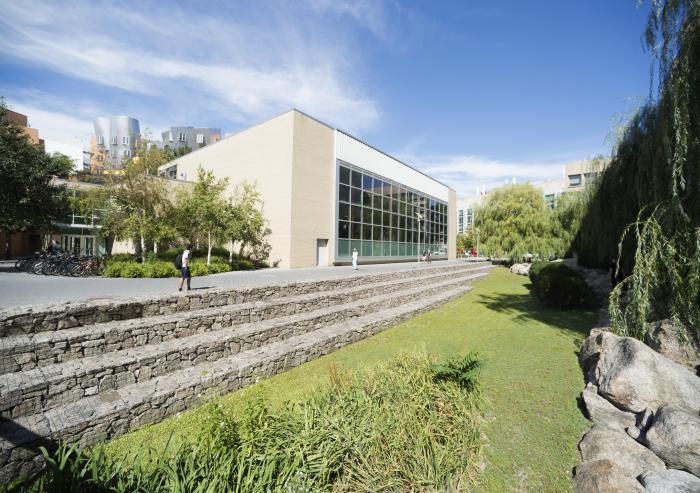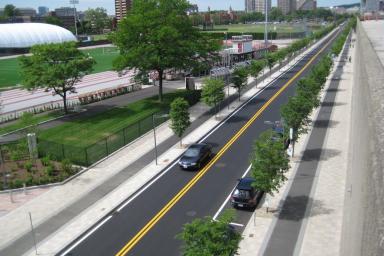
Advancing resilient ecosystems
Healthy, resilient ecosystems provide food and water, enrich the cultural environment, and help regulate systems like climate and disease control. All are vital to human health, wildlife habitats, watershed resources, carbon storage, scenic landscapes, and other factors that ensure quality of life on Earth. Climate projections indicate, however, that the planet will experience increasingly intense and frequent storms as well as rising temperatures, drought, and flooding—putting our ecosystems at serious risk.
At the MIT Office of Sustainability (MITOS), we are working with staff, scientists and thought leaders across MIT to develop strategies that promote resilient ecosystems, human health and well-being in our community. We aim to develop systems and practices in the urban, built environment of our campus that mimic the natural hydrological cycle, build healthy soils, and support biodiversity. Cambridge and Boston have performed important climate studies that provide the context for MIT’s own Campus Climate Vulnerability Assessment—foundational research that is essential to the work of understanding and solution development.
Learn about efforts to conserve and improve water, landscape, and air quality.

Water is an indispensable resource, not only for MIT, but also for the global community. Our campus’ health and activities are dependent on a consistent water supply for restrooms, drinking water faucets, showers, cafeterias, laboratories, and landscaping. Also, MIT’s Central Utilities Plant (CUP) provides the campus with electricity and thermal power through cogeneration, a process dependent on water. Learn more about managing water for a sustainable future.

Air quality is a measure of the concentration of pollution in the surrounding air over a period of time. There are many sources of air pollutants and factors that can effect air quality: emissions from energy production, vehicle exhaust, solvent fumes, methane from waste, smoke, organic matter like pollen, and changes in the weather. The quality of the air, both indoors and out, can have a significant impact on the health of the MIT community and that of the surrounding natural environment.
Air pollution and climate change are also inextricably linked. Heat waves and flooding can lead to mold growth, for example. Climate change also fosters greater pollen production, increasing the concentration of allergens in the air. Learn more about achieving and maintaining healthy air quality.

From a semi-industrial landscape to a densely populated center of innovation, our campus landscape has undergone dramatic evolution since MIT moved across the Charles River to Cambridge in 1916. Currently, approximately 64 percent of MIT’s campus is composed of impervious surfaces, such as roofing and paving. Green spaces provide areas for recreation and habitats for local wildlife. They also clean the air by absorbing carbon dioxide and provide natural water management, actively mitigating the effects of climate change. Learn more about designing a resilient, urban campus.


